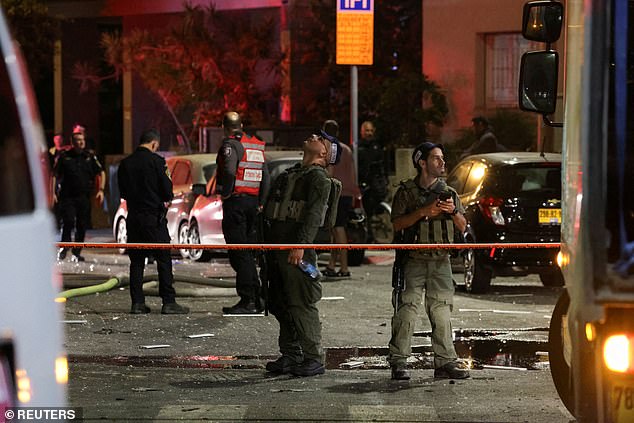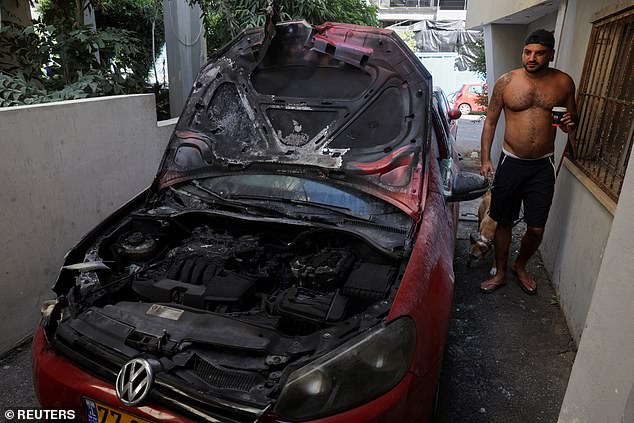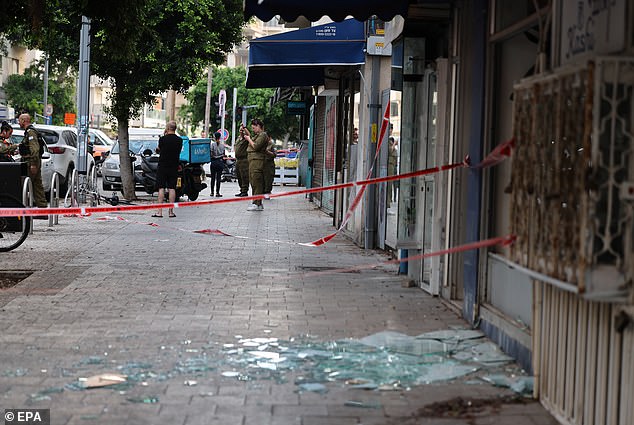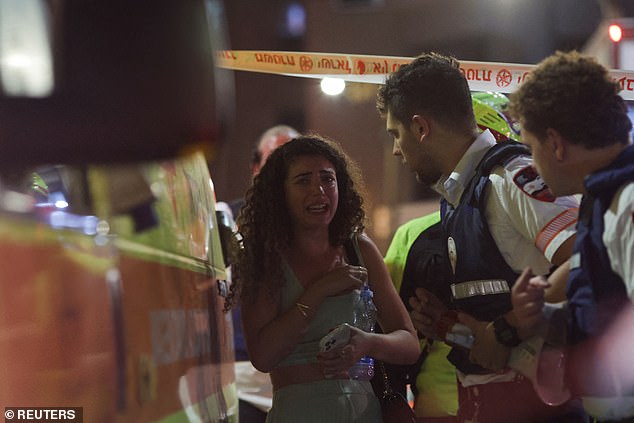One person is killed in ‘Houthi rebel’ drone strike on Tel Aviv after Israeli military detected aerial weapon but didn’t shoot it down ‘due to human error’
One person has been killed in a drone attack by the ‘Houthi rebels’ on Tel Aviv. The Israeli army discovered the air weapon but did not shoot it down ‘due to human error’.
Yemen’s Houthi movement claimed responsibility for the attack that caused an explosion in a building near the US embassy, killing one person and wounding at least 10, according to reports.
An Israeli military official said at a briefing that “a very large drone capable of flying long distances crashed into an apartment building at 3:12 a.m. local time.”
The official, who asked not to be named, said the target was “terrorism” and that the rebel group’s “main objective was to kill civilians in Israel.”
They added that the drone was detected but no immediate alarm was raised due to “human error”.
Members of the Israeli security forces are seen in a cordoned off area where an explosion occurred near the US embassy in Tel Aviv on July 19, 2024.

The Iran-backed Houthi group in Yemen claimed responsibility for the attack, saying it “targeted Tel Aviv in occupied Palestine”

A Tel Aviv man stands next to a damaged car near the site of the deadly explosion amid the Israel-Hamas conflict in Tel Aviv
‘There was no alarm in Tel Aviv because it had not been activated.
“There was human error that caused the eavesdropping and defense systems to not work,” the official said.
“Of course, one of the possibilities we are exploring is Yemen because of the Huthis’ announcements. But we are not ruling anything out.”
The Israeli military said it has launched an investigation into the large and deadly explosion at the US embassy office and will investigate why the country’s air defense systems were not activated to intercept the “air target” before damage was done.
Following the drone attack, the Israeli Air Force said on social media that it had increased patrols to “protect the country’s airspace.”
The official said another drone was detected on Israel’s eastern border.
‘Last night there was another incident where we stopped a UAV on our eastern border, another UAV.’
He gave no details about the origin.
According to Israeli police, the body of a man was found in an apartment near the explosion site and the circumstances surrounding his death are also under investigation.
A spokesman for the Houthi forces said in a social media post on Friday that the Iran-linked group “targeted Tel Aviv in occupied Palestine.”
It was claimed that a new drone was being used that can ‘evade interception systems and be detected by radars’.

Shards of glass can be seen in the streets of Tel Aviv after the drone strike after the ‘new’ air weapon ‘evaded interception systems’

Emergency workers assist a woman at the scene of the explosion in Tel Aviv
Images from the devastating event in Tel Aviv show vehicles destroyed, windows shattered and streets strewn with rubble as authorities try to find victims and assess the damage from the explosion.
Yair Lapid, an Israeli opposition politician and leader of the centrist Yesh Atid party, said the attack “proves once again that this government does not know and cannot guarantee the safety of the citizens of Israel.”
“Whoever loses deterrence in the north and south also loses it in the heart of Tel Aviv,” he wrote on X.
‘There are no policies, no plans, only public relations and discussions about themselves. They [the government] “I have to go,” he continued.
Local resident Alon told Haaretz of the terrifying attack: “The whole building shook.”
“My neighbor’s windows were broken, so I was sure something had hit the building. It wasn’t until I went outside that I realized there were multiple buildings damaged.”
The incident came after the Israeli military confirmed it had killed a senior Hezbollah militia commander in southern Lebanon on July 3.
A Hezbollah statement at the time identified the slain commander as Mohammad Naameh Nasser, who called himself Abu Naameh.
An anonymous Hezbollah official said he was head of the group’s Aziz unit, one of three regional branches in southern Lebanon.
This is a breaking news story. More to come.
